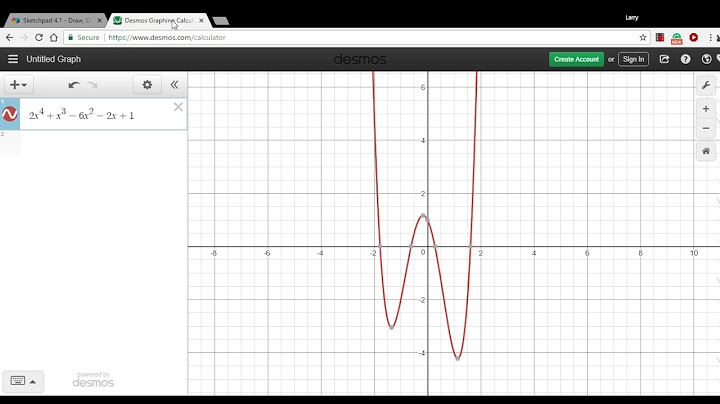In this mini-lesson, we will explore the process of converting standard form to vertex form and vice-versa. The standard form of a parabola is y = ax2 + bx + c and the vertex form of a parabola is y = a (x - h)2 + k. Here, the vertex form has a square in it. So to convert the standard to vertex form we need to complete the square. Show
Let us learn more about converting standard form to vertex form along with more examples. Standard Form and Vertex Form of a ParabolaThe equation of a parabola can be represented in multiple ways like: standard form, vertex form, and intercept form. One of these forms can always be converted into the other two forms depending on the requirement. In this article, we are going to learn how to convert
 Let us first explore what each of these forms means. Standard FormThe standard form of a parabola is:
Here, a, b, and c are real numbers (constants) where a ≠ 0. x and y are variables where (x, y) represents a point on the parabola. Vertex FormThe vertex form of a parabola is:
Here, a, h, and k are real numbers, where a ≠ 0. x and y are variables where (x, y) represents a point on the parabola. How to Convert Standard Form to Vertex Form?In the vertex form, y = a (x - h)2 + k, there is a "whole square". So to convert the standard form to vertex form, we just need to complete the square. But apart from this, we have a formula method also for doing this. Let us look into both methods. By Completing the SquareLet us take an example of a parabola in standard form: y = -3x2 - 6x - 9 and convert it into the vertex form by completing the square. First, we should make sure that the coefficient of x2 is 1. If the coefficient of x2 is NOT 1, we will place the number outside as a common factor. We will get: y = −3x2 − 6x − 9 = −3 (x2 + 2x + 3) Now, the coefficient of x2 is 1. Here are the steps to convert the above expression into the vertex form. Step 1: Identify the coefficient of x.  Step 2: Make it half and square the resultant number.  Step 3: Add and subtract the above number after the x term in the expression.  Step 4: Factorize the perfect square trinomial formed by the first 3 terms using the suitable identity. Here, we can use x2 + 2xy + y2 = (x + y)2. In this case, x2 + 2x + 1= (x + 1)2 The above expression from Step 3 becomes:  Step 5: Simplify the last two numbers and distribute the outside number. Here, -1 + 3 = 2. Thus, the above expression becomes:  This is of the form y = a (x - h)2 + k, which is in the vertex form. Here, the vertex is, (h, k)=(-1,-6). By Using the FormulaIn the above method, ultimately we could find the values of h and k which are helpful in converting standard form to vertex form. But the values of h and k can be easily found by using the following steps:
Let us convert the same example y = -3x2 - 6x - 9 into standard form using this formula method. Comparing this equation with y = ax2 + bx + c, we get a = -3, b = -6, and c = -9. Then (i) h = -b/2a = -(-6) / (2 × -3) = -1 (ii) k = -3(-1)2 - 6(-1) - 9 = -3 + 6 - 9 = -6 Substitute these two values (along with a = -3) in the vertex form y = a (x - h)2 + k, we get y = -3 (x + 1)2 - 6. Note that we have got the same answer as in the other method. Which method is easier? Decide and go ahead. Tips and Tricks: If the above processes seem difficult, then use the following steps:
Here, D is the discriminant where D = b2 - 4ac. How to Convert Vertex Form to Standard Form?To convert vertex form into standard form, we just need to simplify a (x - h)2 + k algebraically to get into the form ax2 + bx + c. Technically, we need to follow the steps below to convert the vertex form into the standard form.
Example: Let us convert the equation y = -3 (x + 1)2 - 6 from vertex to standard form using the above steps: y = -3 (x + 1)2 - 6 Important Notes on Standard Form to Vertex Form:
☛ Related Topics:
Standard Form to Vertex Form Examples
go to slidego to slidego to slide  Great learning in high school using simple cues Indulging in rote learning, you are likely to forget concepts. With Cuemath, you will learn visually and be surprised by the outcomes. Book a Free Trial Class FAQs on Standard Form to Vertex FormHow Do You Convert Standard Form to Vertex Form?To convert standard form to vertex form,
How Do You Convert Vertex Form to Standard Form?Converting vertex form into standard form is so easy. Just expand the square in y = a (x - h)2 + k, then expand the brackets, and finally simplify. How to Convert Standard Form to Vertex Form Using Completing the Square?To convert standard form to vertex form by using completing the square method,
How to Find the Vertex of a Parabola in Standard Form?Vertex can't be directly identified from standard form. Convert standard form into vertex form y = a (x - h)2 + k, then (h, k) would give the vertex of the parabola. How to Convert Standard Form to Vertex Form Without Completing the Square?To convert y = ax2 + bx + c into y = a (x - h)2 + k without completing the square, just find 'h' and 'k' using the following formulas
What is the Use of Converting Standard Form into Vertex Form?Vertex form is more helpful in graphing quadratic functions where we can easily identify the vertex, and by finding one/two points on either side of the vertex would give the perfect shape of a parabola. How do you find the vertex equation?What is the Formula to Find the Vertex on Y Coordinates? To find the vertex (h, k), get h(x-coordinate of the vertex) = -b/2a from the standard equation y = ax2 + bx + c and then find y at h to get k (the y-coordinate of the vertex).
How do you do vertex form step by step?The standard form of a parabola is y = ax2 + bx + c and the vertex form of a parabola is y = a (x - h)2 + k. Here, the vertex form has a square in it.
...
Standard Form to Vertex Form.. |

Related Posts
Advertising
LATEST NEWS
Advertising
Populer
Advertising
About

Copyright © 2024 mempelajari Inc.


















